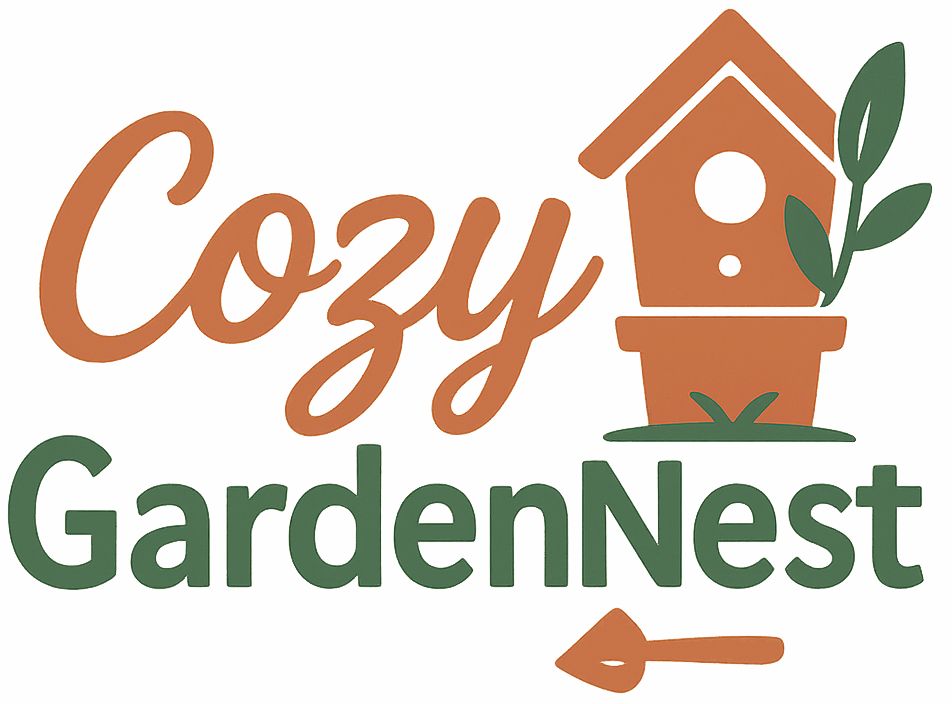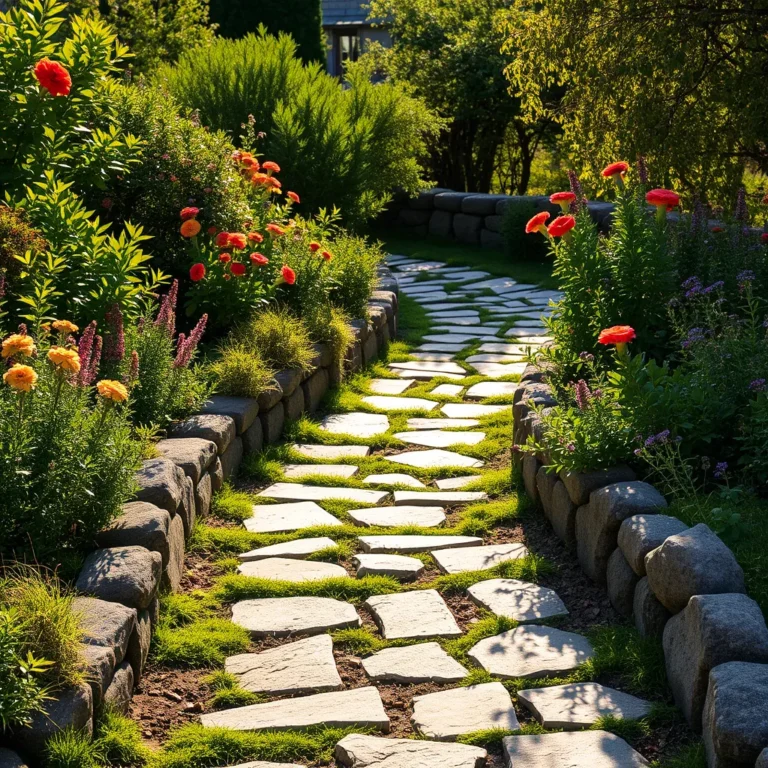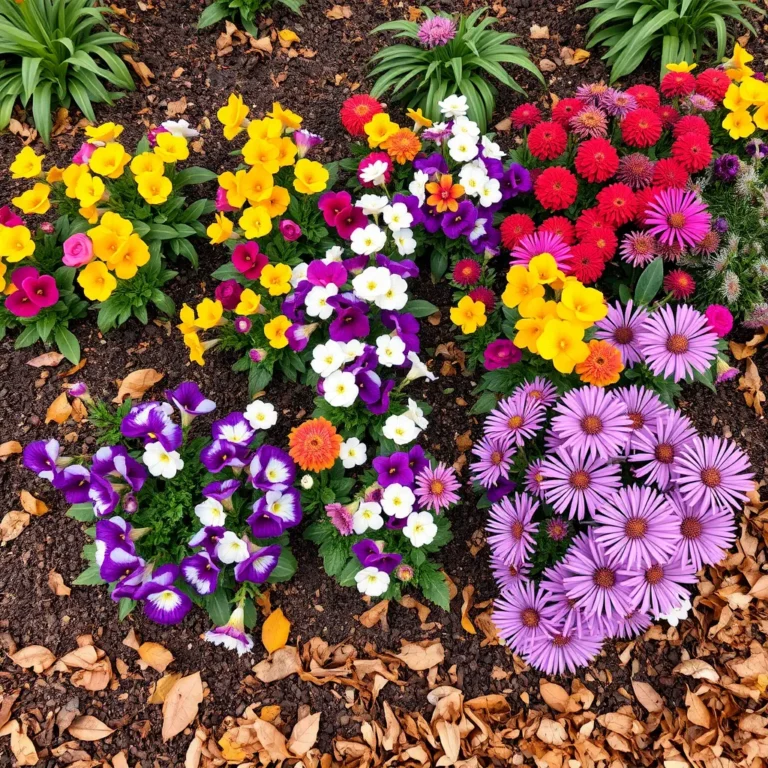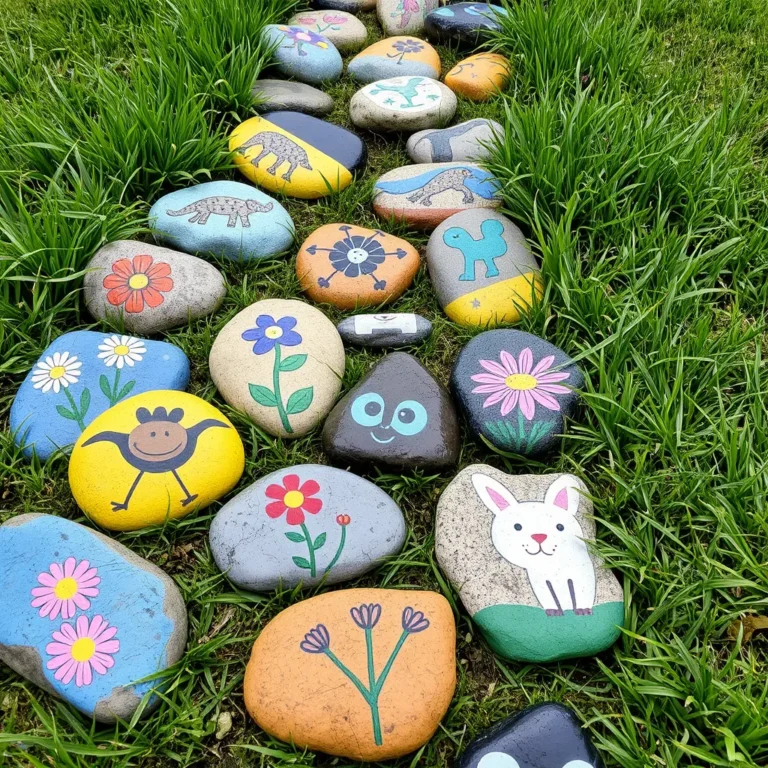10 Creative Ways to Use Vertical Space in Your Garden

Are you ready to transform your garden? Vertical space offers endless possibilities. With just a little creativity, you can make your garden bloom upwards instead of outwards. I’ll show you ten inventive ways to make the most of your vertical space. From wall-mounted shelves to living walls, each idea will help you elevate your garden. Let’s jump into these fun and useful tips that will turn your outdoor space into a lush paradise!
Install Vertical Planters
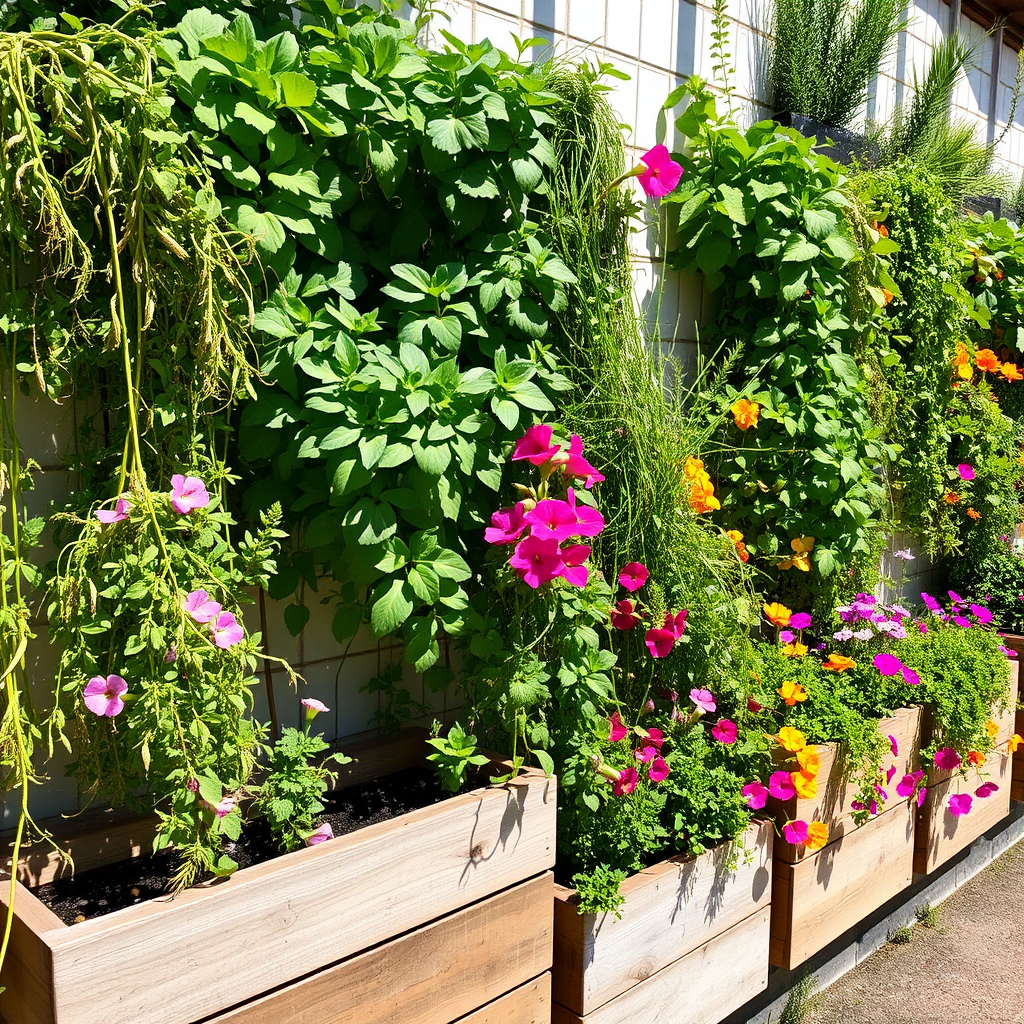
Vertical planters save space and add charm. You can find many styles to fit your garden. Wood, metal, or fabric are great choices. Each material gives a unique look.
You can buy pre-made vertical planters or build your own. A simple wooden frame with pockets for plants works well. You can also use old pallets. Just attach them to a wall and fill the spaces with soil and plants.
When choosing plants, think about size and light. Small herbs or flowers fit well in vertical planters. They grow well and look nice. Be sure to water them regularly. This will keep them healthy and full of life.
Use Wall-Mounted Shelves
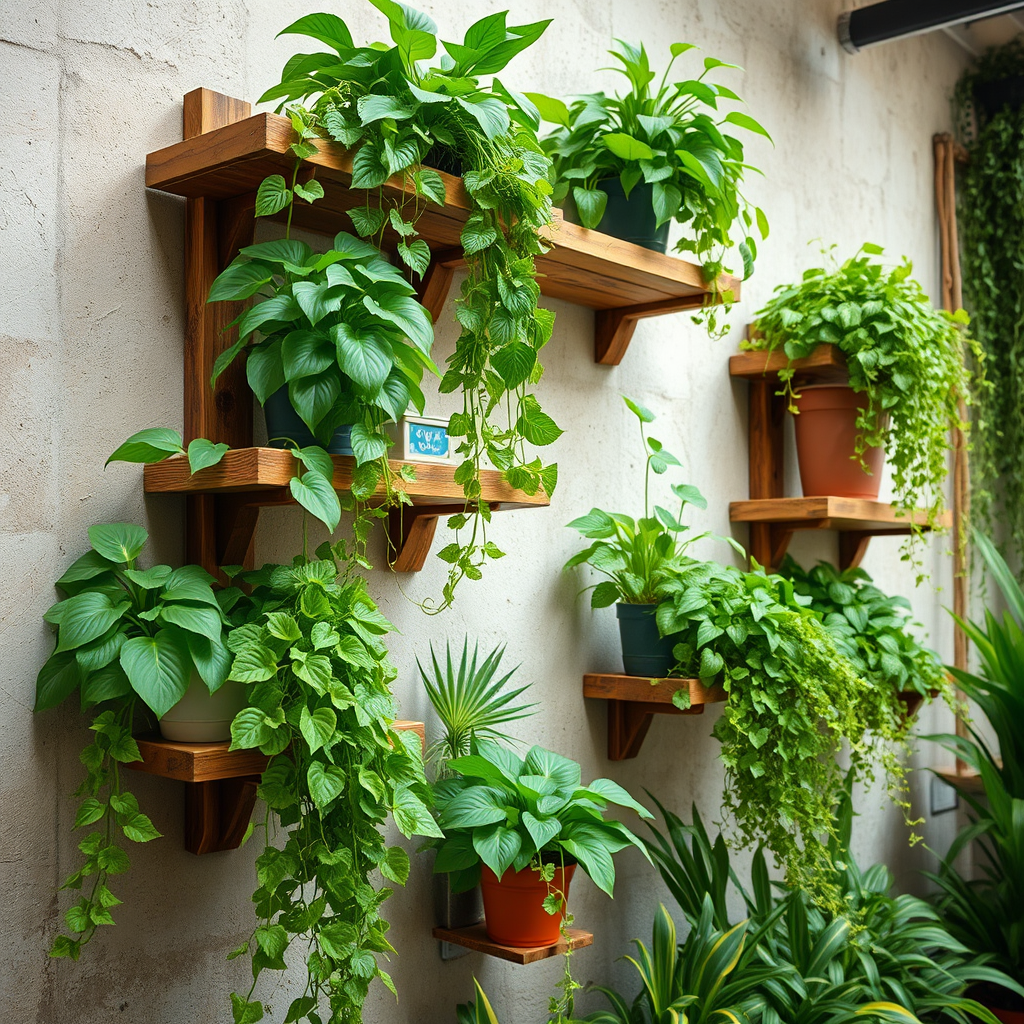
Wall-mounted shelves are a fun way to add plants to your space. They create room for smaller plants and knick-knacks. You can use wood or metal shelves to match your garden’s style.
To install, pick a sturdy wall. Make sure it can hold the weight of your plants. Place the shelves at different heights for more visual interest.
You can use these shelves for small pots or decorative items. Try mixing plant types for added charm. This will make your garden feel lively and unique.
Build a Vertical Garden Grid

A vertical garden grid is perfect for climbing plants. You can make one using trellises or wooden frames. This type of setup allows plants to grow upwards, saving ground space.
Start by choosing the right spot in your garden. Make sure it gets enough sunlight. Then, build your grid with wooden stakes and string or wire.
Once your grid is ready, plant climbing plants like beans or cucumbers. They will climb and fill your grid with green. This setup not only saves space but also adds beauty to your garden.
Hang Potted Plants

Hang potted plants to save space and add style. Use sturdy hooks or wire to hang pots at different heights. This method creates a fun visual effect. It draws the eye up and makes your garden feel larger.
Tips:
– Choose pots with drainage holes. This prevents water buildup and keeps roots healthy.
– Use different pot sizes for variety. Mix small, medium, and large pots for interest.
– Hang pots near a wall or fence. This gives support and helps with wind.
– Consider using colorful pots. Bright colors can create a cheerful atmosphere.
– Choose plants that cascade. Trailing plants like ivy or petunias look lovely when hung.
Hanging potted plants is an easy way to enhance your garden. It adds depth and makes your gardening space unique.
Create a Living Wall
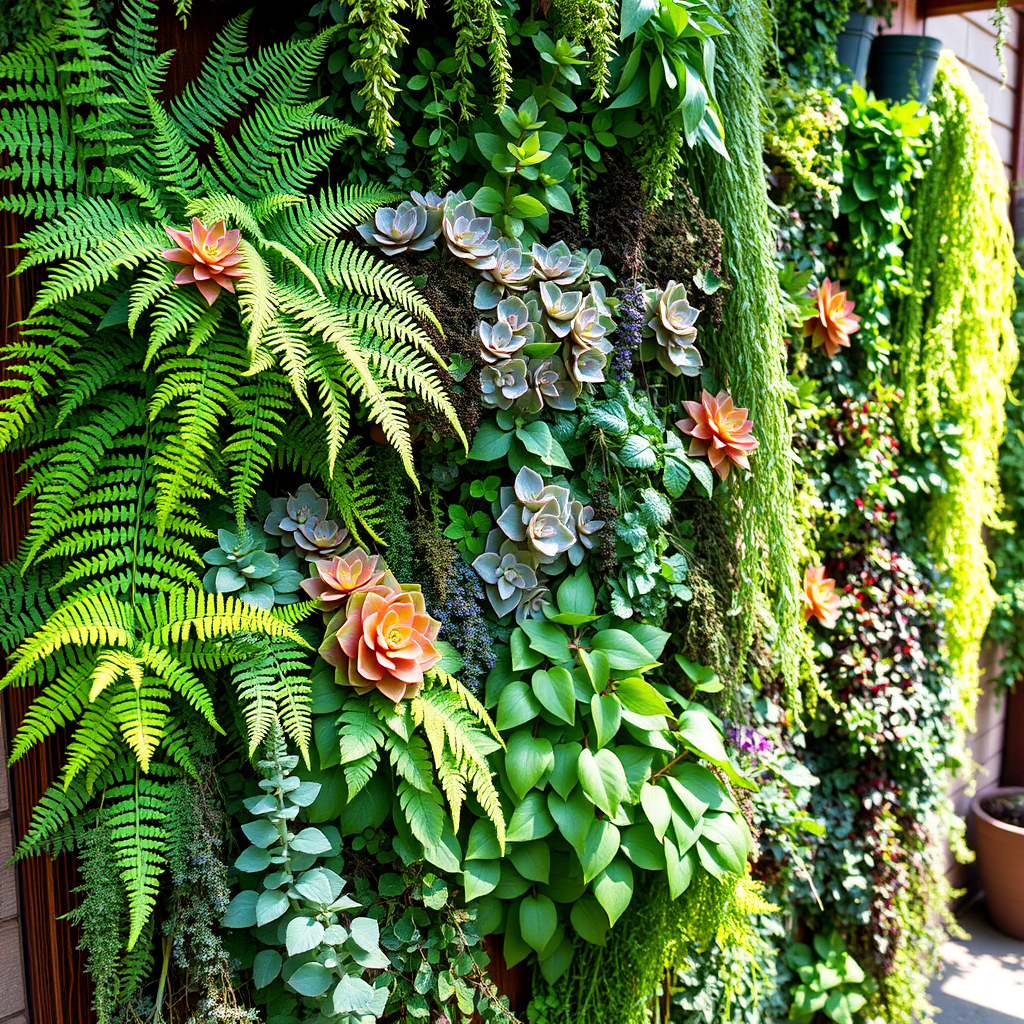
A living wall is a stunning way to use vertical space. It involves planting various plants on a wall or frame. This creates a green artwork that breathes life into any area.
Steps:
1. Choose a wall or panel. Make sure it gets enough light.
2. Select plants based on light and water needs. Mix ferns, succulents, and herbs for diversity.
3. Use a vertical garden system. These kits often come with pockets or containers for plants.
4. Secure the system to the wall. Ensure it is stable and can hold the weight of the plants.
5. Water the plants regularly. Check the soil moisture to keep plants healthy.
6. Prune as needed. This keeps the wall looking neat and allows new growth.
A living wall not only saves space but also improves air quality. Plus, it adds beauty to your garden.
Use Ladders for Plant Display
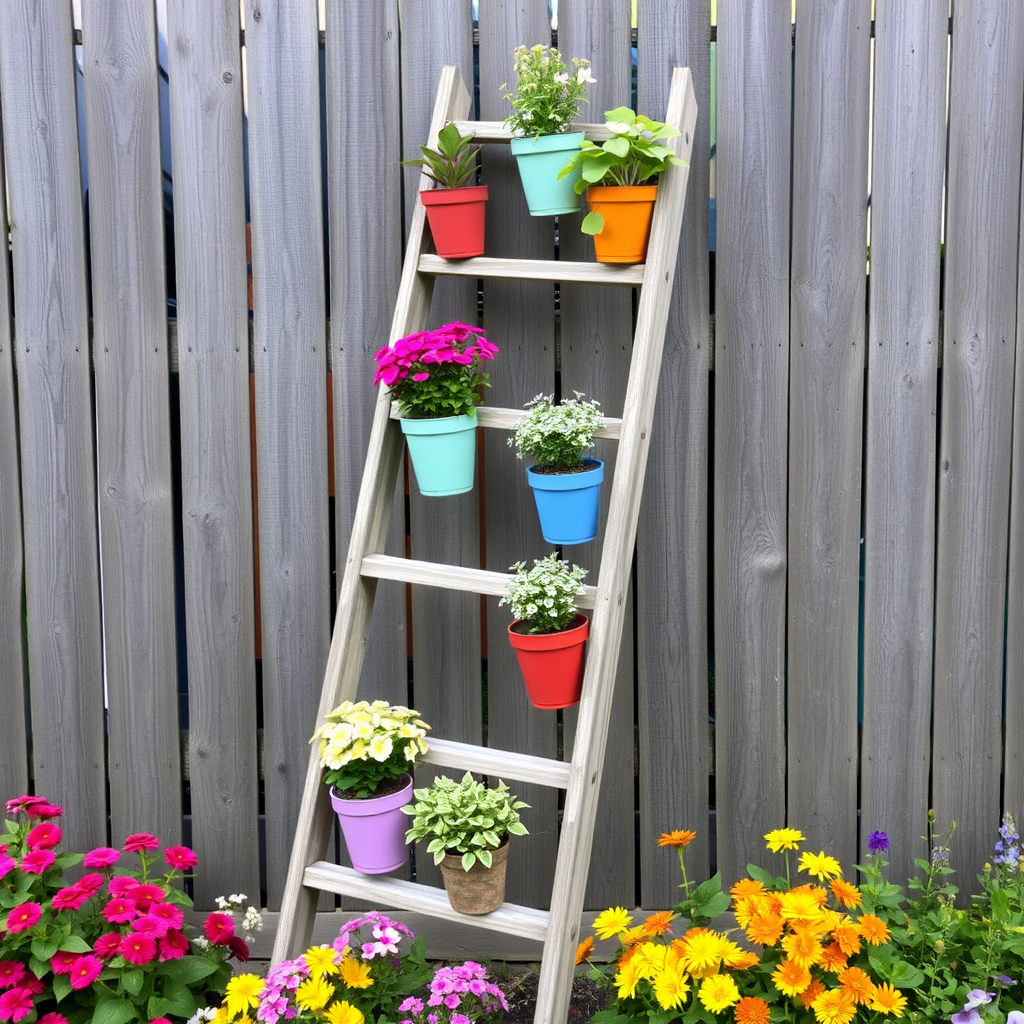
Old ladders can make unique plant displays. They add charm and character to any garden. You can find old wooden or metal ladders at thrift stores or in your garage.
Ideas:
– Clean the ladder well. Remove any dirt or loose paint.
– Lean the ladder against a wall or fence. This adds stability and style.
– Place pots on each rung. Mix different plants and colors for a lively effect.
– Add small hooks to the sides. You can hang smaller pots or garden tools.
– Use the top for larger plants. A big pot can sit safely at the top.
Using ladders for plant display is a creative way to showcase your plants. It’s a fun project that brings life to your garden space.
Construct an A-Frame Trellis
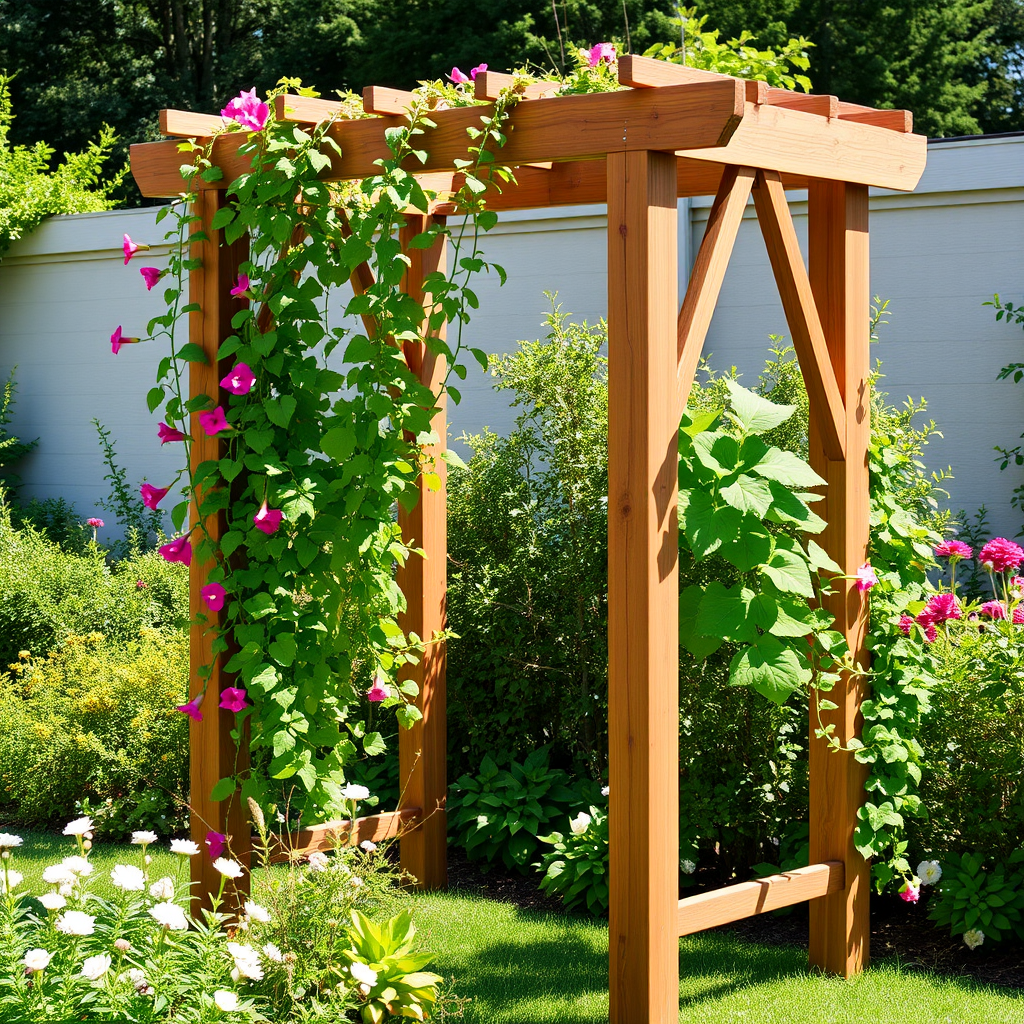
Building an A-frame trellis is fun and easy. This structure helps plants grow tall and catch sunlight. To start, gather some supplies. You will need:
– Two wooden beams
– Cross beams (for support)
– Screws
– A drill
– A saw
First, cut the wooden beams to your desired height. A good height is about 6 to 7 feet. Next, lean the beams to form an “A” shape. Make sure they touch at the top. Use screws to secure them. Then, add cross beams for extra support.
Now, it’s time to plant! Vining plants like peas or beans love this trellis. As your plants grow, they will climb up the sides. This method saves space and allows for better airflow.
The A-frame trellis also looks nice in your garden. It draws the eye and adds height. Plus, it helps you grow more food in less space!
Incorporate Guttering for Planting
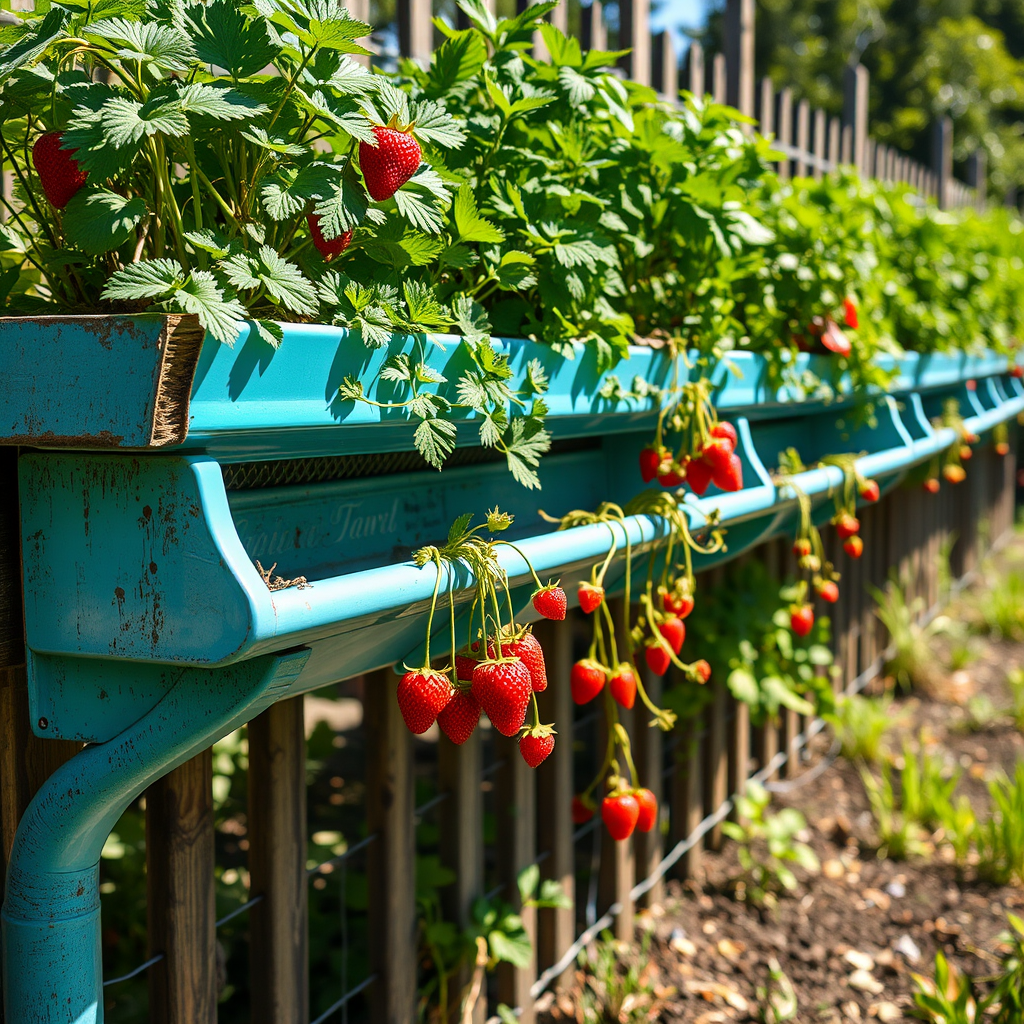
Using old guttering for planting is a clever trick. It saves ground space and looks unique. To start, collect some old gutters and brackets. You will also need:
– A drill
– Soil
– Plants (like herbs or strawberries)
First, cut the gutters to your preferred length. Next, drill holes in the bottom for drainage. Attach the gutters to a wall or fence using brackets. Make sure they are level for water flow.
Fill the gutters with soil, then plant your herbs or flowers. This method keeps plants off the ground. It also makes watering easy. Just use a hose or a watering can.
Guttering adds a modern touch to your garden. It’s perfect for small spaces or patios. Plus, you can grow a variety of plants in a small area.
Install Vertical Grow Bags

Vertical grow bags are a smart choice for small gardens. They allow you to grow many plants in a small space. You can find these bags in various sizes. Here’s what you need:
– Grow bags
– Potting soil
– Plants (like tomatoes or peppers)
To start, choose a spot with good sunlight. Place the grow bags in a row or stack them. Fill each bag with potting soil. Then, plant your chosen seeds or seedlings.
Grow bags have many benefits. They drain well, so your plants won’t drown. They also keep plants warm, which helps them grow faster.
For easy access, arrange the bags at different heights. This setup allows you to reach all your plants without bending over. Vertical grow bags make gardening fun and easy, even in tight spaces!
Utilize Fencing for Climbing Plants
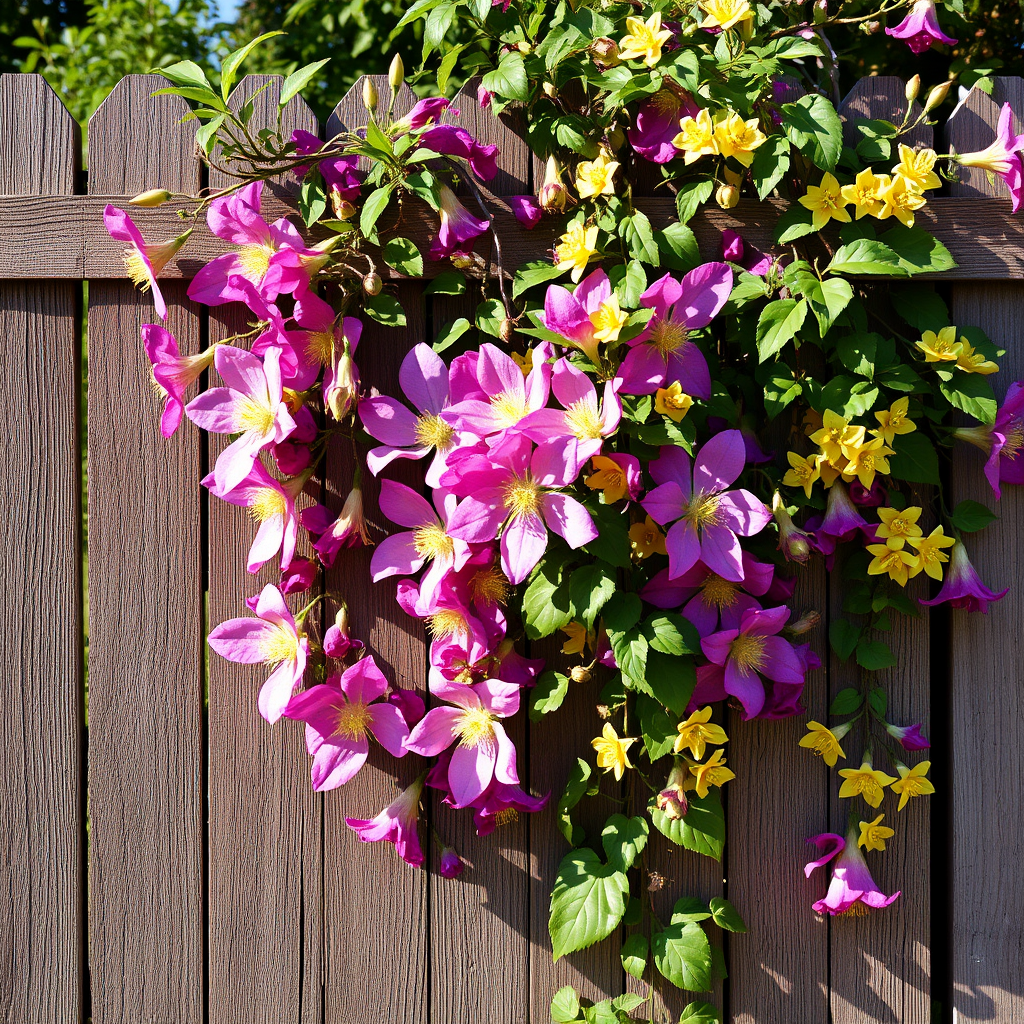
Fencing can be a great support for climbing plants. You can use wood, metal, or even vinyl fences. Here are some good climbing plants:
– Clematis: This plant blooms with big, pretty flowers.
– Honeysuckle: It has sweet-smelling flowers that attract bees.
– Beans: Great for eating and they grow fast.
To train your plants, start with young vines. Use garden ties or soft string to attach them to the fence. Make sure to guide them as they grow. Regularly check for tangled or untrained vines and fix them. This keeps your garden neat and full of blooms.
Create Hanging Herb Gardens
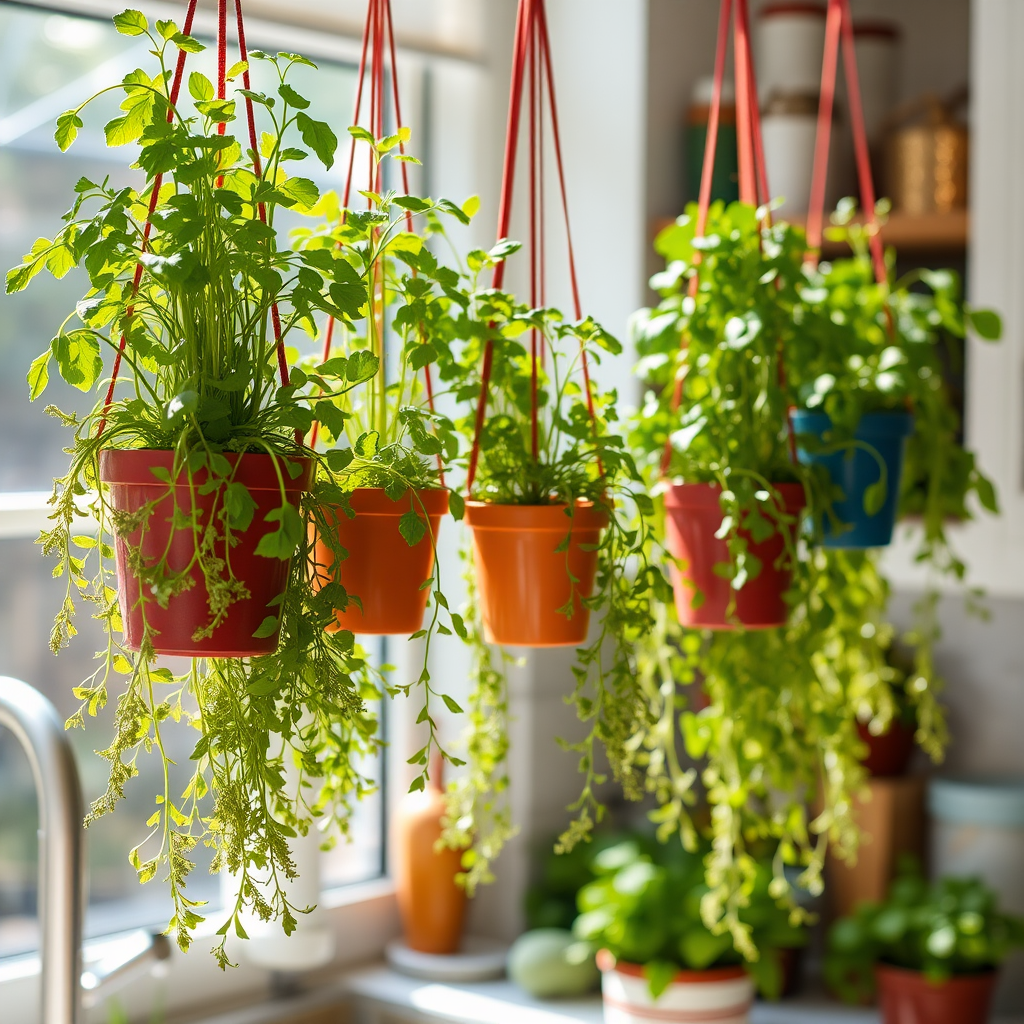
Hanging herb gardens are perfect for small spaces. You can grow herbs right in your kitchen or on a small patio. Here’s how:
– Choose the Right Herbs: Basil, mint, and parsley are great choices. They grow well in pots.
– Use Small Pots: Choose pots with good drainage. You can hang them on hooks or a rack.
– Arrange: Hang pots at different heights to create a beautiful display.
To keep herbs healthy, water them regularly. You can also pinch the leaves to encourage growth. This way, you have fresh herbs ready for cooking!
Conclusion
This blog post explored various ideas for maximizing your planting space. You learned about vertical planters, wall-mounted shelves, and creating a living wall. I shared tips on hanging potted plants and repurposing ladders for display. You discovered ways to build trellises and use old guttering creatively. Each method offers a unique way to enjoy gardening in small areas. Embrace your green thumb and try these ideas to transform your space into a vibrant garden.
